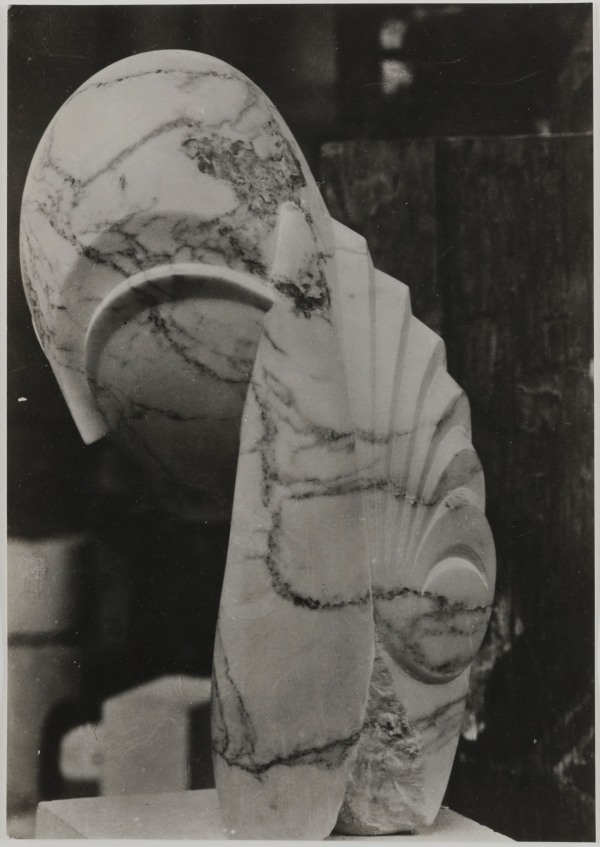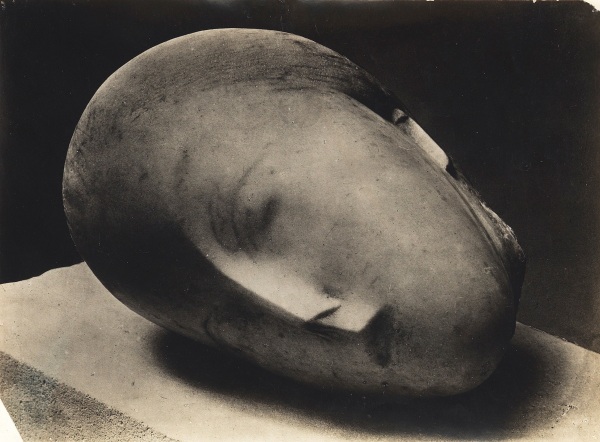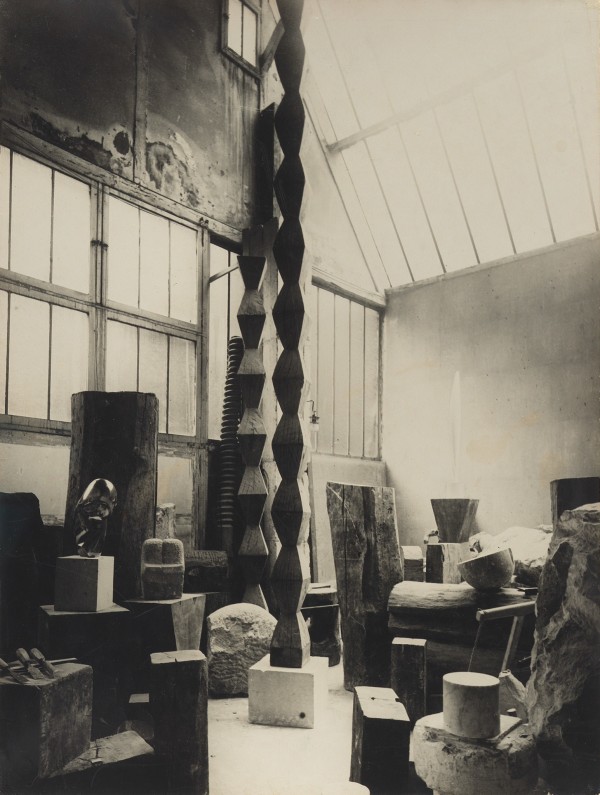Brancusi in New York 1913 – 2013
-
-
“[Brancusi] introduced three of the decisive inventions in sculpture of the twentieth century: environmental sculpture, minimalist sculpture, and serial sculpture.”
– Museum director and Brancusi expert, Pontus Hulten -
Paul Kasmin Gallery is pleased to present Brancusi in New York 1913 – 2013, an exhibition of works from the Brancusi Estate collection. The show celebrates Brancusi’s 100th anniversary in New York following his debut at the Armory Show in 1913, where the sculptor exhibited five works that directed modern sculpture on a radical new path.
The Gallery will present five masterpieces by Brancusi: Head, Mademoiselle Pogany II, The Newborn, Sleeping Muse II, and Fish. The works will be presented in a contemporary context at Paul Kasmin Gallery’s 515 West 27th Street location, from November 7, 2013 to January 24, 2014, as a testament to Brancusi's continued relevance in today’s art world. A fully illustrated catalogue, Brancusi in New York 1913 – 2013, published by Assouline, chronicles the sculptor’s success in New York City and his impact on its artistic milieu. The exhibition was produced in partnership with the Brancusi Estate and is curated by Jérôme Neutres, who is the catalogue’s author.
-
Together Head, Mademoiselle Pogany II, The Newborn, Sleeping Muse II, and Fish explore dominant themes in Brancusi’s oeuvre. Collectively and individually, they testify to his signature style admired by New Yorkers since 1913, and today they exemplify a sophisticated expression of perfected simplicity. With these sculptures, Brancusi shattered the paradigm of abstraction in sculpture and radicalized the idea of purity in form. Simply stated in the words of Jérôme Neutres, “Brancusi changed the way art was made.”
Head (circa 1920), made from polished bronze and measuring 7.5 by 9.5 by 11.75 inches in an edition of 5, illustrates how, in the words of Eugene Ionesco, “[Brancusi] had assimilated the entire history of sculpture, mastered it, gone beyond it, rejected it, come back to it, purified it, reinvented it. He had got it down to its essence.” With Head, Brancusi’s inquiry into the totemic nature of masks resulted in an interpretation that encapsulated his most complete geometric abstraction.
Mademoiselle Pogany II (1925), stands at 11.7 inches tall, in an edition of 8. The plaster model of the first version debuted at the Armory Show in 1913. The series of Mademoiselle Pogany was his most photographed work. Today this polished bronze version of Mademoiselle Pogany II still embodies the inexpressible nature of the feminine spirit.
Sleeping Muse II (1923), whose first version attracted the most attention in 1913, resulted in his first requests from collectors for bronze editions. It features also an abstracted face of a woman, like Mademoiselle Pogany II’s serpentine figure beckons the viewer with her subdued look. Sleeping Muse II transforms the viewer into a voyeur watching over the sleeping woman with delicate suggestions of a nose, large oval-shaped closed eyes, and a half-open mouth.
“We do not see real life except by its reflection,” wrote Brancusi in 1919, and with The Newborn (1920) Brancusi created his most radically abstract sculpture representing not only the act of birth but also the newborn baby. Previously Brancusi named it Beginning of the World, referencing the violence with which human life begins. But Brancusi tempers this association with the smooth lines of the sculpture, bringing serenity into the subject matter.
With Fish (1926), the artist advances his study of sculpture into a moving artwork. Fish, a polished bronze sculpture measuring 5.3 x 16.5 x 1.2 inches in an edition of 8, rotates on its disc allowing the sculpture to mimic the movement and spirit of its subject. Fish was born out of Brancusi’s goal to capture a creature’s movement, one he worked obsessively towards.
“Without the Americans, I would not have been able to produce all this or even to have existed," said Constantin Brancusi to the New York Times in 1955 when the Solomon R. Guggenheim Museum celebrated his work with the first museum retrospective of his work. Brancusi’s second Guggenheim retrospective occurred in 1969, and was held in the museum’s Frank Lloyd Wright rotunda. MoMA included works by Brancusi in more than ten group exhibitions between 1934 and his death in 1957. It took until 1967 for a French museum to have a show dedicated to his work (Tribute to Brancusi, at the Musee National d’Art Moderne in Paris) and until 1995 for the first full-scale exhibition in his adopted country at the Pompidou Center.
The exhibition design by studioMDA’s founder Markus Dochantschi plays with scale and perception, inviting the viewer to experience the non-linear geometry of the sculptures within the linear pattern of the exhibition layout, which Dochantschi modeled after the Manhattan grid. Brancusi viewed architecture as “inhabited sculpture” and saw echoes of his work in the New York skyline. In this exhibition, his bronze sculptures are placed on solid limestone pedestals, merging Brancusi’s fluid and seamless forms with supports that reflect the regimented layout of New York.
-
-
Works
-
Join our Newsletter
* denotes required fields
We will process the personal data you have supplied in accordance with our privacy policy (available on request). You can unsubscribe or change your preferences at any time by clicking the link in our emails.
-
Explore
-
Explore
- Diana Al-Hadid
- Alma Allen
- Theodora Allen
- Sara Anstis
- Ali Banisadr
- Tina Barney
- Judith Bernstein
- JB Blunk
- Mattia Bonetti
- William N. Copley
- Cynthia Daignault
- Ian Davenport
- Max Ernst
- Liam Everett
- Leonor Fini
- Barry Flanagan
- Walton Ford
- Jane Freilicher
- vanessa german
- Daniel Gordon
- Alexander Harrison
- Elliott Hundley
- Robert Indiana
- Lee Krasner
- Les Lalanne
- Matvey Levenstein
- Lyn Liu
- Robert Motherwell
- Jamie Nares
- Nengi Omuku
- Robert Polidori
- Jackson Pollock
- Elliott Puckette
- Alexis Ralaivao
- George Rickey
- James Rosenquist
- Mark Ryden
- Jan-Ole Schiemann
- Joel Shapiro
- Bosco Sodi
- Dorothea Tanning
- Naama Tsabar
- Bernar Venet




![Constantin Brancusi, Le Nouveau-Né [II] et Tête d’enfant endormi (Newborn [II] and Head of a Sleeping Child), ca. 1923 (printed 1930s)](https://artlogic-res.cloudinary.com/w_600,c_limit,f_auto,fl_lossy/artlogicstorage/pkg/images/view/a09c1f3f4a6137a962e77e87115bd561j/kasmingallery-constantin-brancusi-le-nouveau-n-ii-et-t-te-d-enfant-endormi-newborn-ii-and-head-of-a-sleeping-child-ca.-1923-printed-1930s.jpg)









